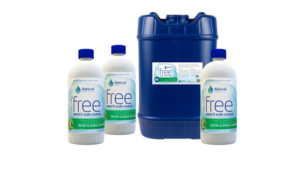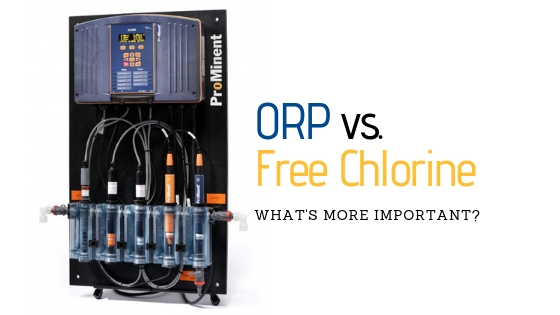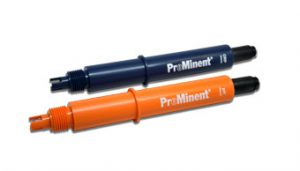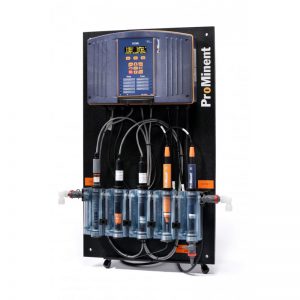How to Avoid Plaster Dust on a Commercial Pool Startup
Let’s talk about a commercial pool startup. Not sure about you, but brushing plaster dust in the middle of a big pool is not enjoyable to us. Maybe that’s just us, and we are not pool builders.
Plaster dust is not just an annoyance, it’s actually a symptom of a more significant problem. Consider this: every speck of plaster dust you see is calcium that should have hardened within the plaster surface itself. In other words, you are looking at calcium that was stolen from the surface, and can never be put back. If your pool has a lot of plaster dust on startup, it is evidence of early damage and weakening of the plaster.

Commercial Pool Startup Process
There are many ways to start up a pool. They range from just filling with water and doing almost nothing, to filling and hitting the water hard with muriatic acid to burn up the dust. There is also the industry-standard 30-day startup procedure, as published by the National Plasterers Council (here). The NPC startup is better than winging it and is full of good information. That being said, we have developed a method we believe is even better, and can prevent plaster damage from the beginning. It is called The Orenda Startup™.
Rather than trying to adjust the water chemistry after the pool is full, the Orenda Startup is proactive. It involves testing the fill water before the pool is even completed, so you know what chemicals the water will need. You see, water is almost never LSI-balanced out of the tap. If the fill water is aggressive, you can count on plaster dust and the pH spiking for the first several days of your pool startup. That is not only an annoying problem but a costly one too. Think of all the repeat visits; the cost of all the acid you continue to add to bring the pH back down; the time it takes to brush the pool to lift the dust. And even with all that, for large commercial jobs, can you even brush the middle of the pool?
When you test the tap water for the LSI factors (pH, alkalinity, calcium hardness, water temperature, TDS and cyanuric acid), you can input those factors into the free Natural Pool Products app.
Download our free LSI dosing calculator app Natural Pool on iOS or Android
The Natural Pool app will show you the LSI value of the water. Use the calculator to adjust the LSI on the right side of the calculator to +0.20 to +0.50. Ideally, +0.2 something. We recommend calcium hardness to be a minimum of 300 ppm, and alkalinity a minimum of 100 ppm. Tap “Get Dosage” and the app will tell you exactly how much calcium chloride and sodium bicarbonate you will need for the startup.
Add calcium or bicarb while filling (but not both)
Depending on what your tap water chemistry is, you will add either pre-dissolved calcium chloride or sodium bicarbonate as the pool fills. In most cases, calcium goes first, unless you have around 300+ ppm calcium out of the tap. In that situation, add bicarb as the pool fills. On the second day, add the other chemical to achieve the desired LSI. Never add these two chemicals on the same day. they will cloud up because they are incompatible. It’s bad enough on a residential pool; the problem is only magnified on a commercial pool startup.
Commercial Pool Startup Chemicals Needed
Natural Pool Products makes two chemicals that will be necessary for the startup, in addition to the usual commodities: calcium chloride, sodium bicarbonate, muriatic acid.
 Chelating Agent: NaturallyFREE
Chelating Agent: NaturallyFREE
The first and most important chemical is our chelating agent, NaturallyFREE. NaturallyFREE is an alkaline substance that is compatible with all pool surface types, can be added immediately as water begins filling the pool. There is no need to wait until the pool is full, or half full, or whatever other sequestering agents require. Another benefit to using this product is it contains no phosphates, which will be handy down the road if and when you decide to remove phosphates. Especially for a commercial pool startup, getting off to the right start (without problematic byproducts like phosphates) is critical.
A chelating agent is important on any pool startup, especially when adding calcium chloride on the first day. It isolates each ion of calcium by grabbing onto its electrons, which prevents calcium (Ca++) from binding to Carbonate ions (CO3– –). Their valences are perfect opposites, so they attract. But if NaturallyFREE has time to chelate the calcium, it is no longer available to attract with Carbonate ions, therefore inhibiting scale.
Without chelating (or sequestering) calcium, adding it as rapidly as we want to could create some carbonate scale during startup, and that’s no fun. This product needs to be added on fill-up day, regardless of which order you put calcium and bicarb into the pool.
Enzyme: SimplyPURE
 On the second day, once the pool is full, you will add the second chemical (usually bicarb), along with a purge dose of our enzyme, SimplyPURE. This enzyme helps clean the water by removing non-living organics and oils, which are surprisingly common during startup. We are not sure why, but countless startups have visible oil slicks on top of the water as the pool fills up. Since we are not chlorinating the pool for the first few days, keeping it clean is important, and our enzymes are perfect for the job. And, when chlorine is first added, it will have a significantly reduced organic load to manage and can get right to the job of sanitization.
On the second day, once the pool is full, you will add the second chemical (usually bicarb), along with a purge dose of our enzyme, SimplyPURE. This enzyme helps clean the water by removing non-living organics and oils, which are surprisingly common during startup. We are not sure why, but countless startups have visible oil slicks on top of the water as the pool fills up. Since we are not chlorinating the pool for the first few days, keeping it clean is important, and our enzymes are perfect for the job. And, when chlorine is first added, it will have a significantly reduced organic load to manage and can get right to the job of sanitization.
Another reason to add SimplyPURE on a commercial pool startup is for cleaning out the pipes when the equipment is fired up for the first time. We have never seen a pool construction site that does not have dirt and debris around. It is inevitable that some of this can get in the pool, pipes, and equipment. Enzymes help remove some of it; or, if nothing else, can help dislodge it from inside the pipes and get it trapped in the filter for backwashing. It is an affordable insurance practice to get the pool of to a nice, clean start.
Summary
Starting up a pool is critical to the life and longevity of the plaster surface. The LSI is almost always low out of the tap, so we are faced with a choice. We can either balance the water up front, or we can let it find LSI balance on its own (at the expense of calcium in your plaster).
To do our proactive, dust-free startup, follow these basic steps below, or read this procedure from the Orenda website.
- Test the tap water, and input values into the left side of the Natural Pool app’s LSI calculator.
- Adjust dials [on the app] to decide on the desired startup chemistry, with an LSI between +0.20 and +0.50. Ideally +0.2 something, with a minimum of 300 ppm calcium, and 100 ppm alkalinity.
- As the pool begins to fill up, add the purge dose of NaturallyFREE to the pool (32 fl.oz./10,000 gallons).
- Gradually add pre-dissolved calcium chloride (or bicarb) as the pool fills up until the desired amount (prescribed by the app) has been added.
- The next day, purge the pool with SimplyPURE enzymes (32 fl.oz./10,000 gallons) and add pre-dissolved sodium bicarb (or calcium chloride).
- Startup the equipment and proceed with everything else as you would normally.
Contact us before you try this the first time. We will help you dial it in for your situation, as every pool is different. These are just guidelines. Good luck!







